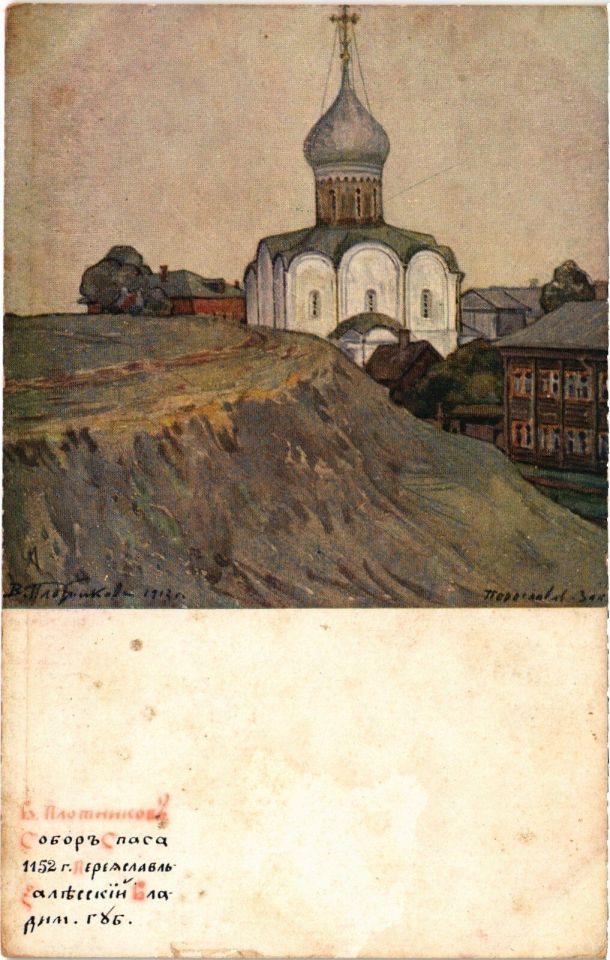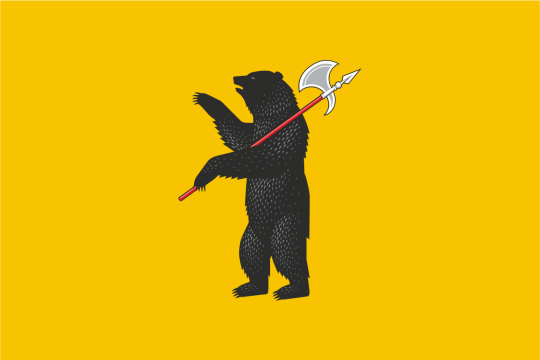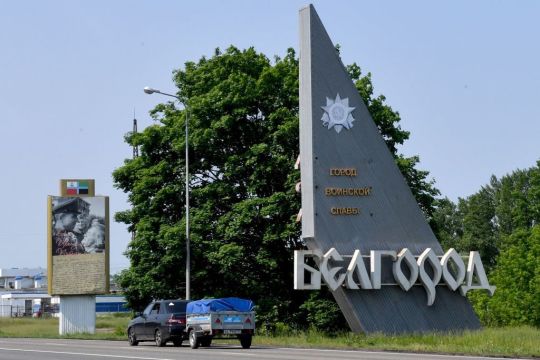#Yaroslavl Oblast
Explore tagged Tumblr posts
Text
Russia. Borisoglebsky. Borisoglebsky Monastery Борисоглебский. Ростовский Борисоглебский монастырь
#2011#autumn#borisoglebsky#september#борисоглебский#борисоглебский монастырь#осень#сентябрь#стена#монастырь#wall#monastery#Borisoglebsky Monastery#Россия#Ярославская область#Russia#Yaroslavl Oblast#крепость#fortress#Canon#Canon EOS 550D#flickr#russian tumblr#русский tumblr
42 notes
·
View notes
Text

12th-century Savior's Cathedral in Pereslavl-Zalessky, Yaroslavl oblast, Russia
Russian vintage postcard
#vintage#tarjeta#12th#zalessky#briefkaart#century#postcard#photography#postal#carte postale#sepia#pereslavl#ephemera#savior#historic#cathedral#russian#ansichtskarte#postkarte#oblast#russia#12th-century#yaroslavl#postkaart#photo
32 notes
·
View notes
Text




Кин-дза-дза! / Kin-dza-dza! Georgiy Daneliya. 1986
Snow Volzhskaya Naberezhnaya, 15, Yaroslavl', Yaroslavskaya oblast', Russia, 150000 See in map
See in imdb
#georgiy daneliya#Кин-дза-дза!#kin-dza-dza!#snow#white#yaroslavl#russia#levan gabriadze#movie#cinema#film#location#google maps#street view#1986
20 notes
·
View notes
Text


Flag Wars Bonus Round
83 notes
·
View notes
Photo

Favourite toy. Photo made in Myshkin, Yaroslavl oblast, Russia (1970s).
148 notes
·
View notes
Text

A typical wooden structure on the outskirts of Yaroslavl Oblast
Russia
located in the Central Federal District, surrounded by
the Tver, Moscow, Ivanovo, Vladimir, Kostroma, and Vologda oblasts.
Photo credit :
This wonderful photo is by
cat___unicorn (IG)
4 notes
·
View notes
Text
Russian telecom equipment destroyed in occupied Donetsk Oblast, Ukraine's intel says

Four facilities housing telecommunication equipment for the illegal operator Phoenix, used by Russian forces, were destroyed in the occupied part of Donetsk Oblast, Ukraine’s military intelligence (HUR) reported on Dec. 29.
Without explicitly claiming responsibility, the agency said that “disruptions to the Russian military’s logistics and communications are an important continuous process."
The Phoenix is a telecommunications operator active in the Russian-occupied part of Donetsk Oblast since 2015.
HUR further reported that fires that melted cellular equipment in Russia’s Leningrad Oblast and destroyed three railway relay cabinets in Yaroslavl Oblast disrupted Russian infrastructure.
0:00
/
1×
Destruction of Russian telecommunications equipment in the occupied territory of Donetsk Oblast, reported on Dec. 29. (Ukraine’s military intelligence / Telegram)
The Kyiv Independent could not verify these claims.
Sabotage operations targeting Russian railways and other parts of infrastructure have been reported throughout the full-scale war.
The Atesh partisan group reported burning down a relay cabinet near the village of Chekhov in Moscow Oblast in early December, disrupting Russian supply lines
These coordinated attacks highlight Ukraine’s strategy to weaken Russian operational and logistical capabilities as the war continues.
Russia claims Ukrainian pilot surrendered in Kursk Oblast, Ukraine denies
Ukraine’s Air Force on Dec. 29 denied claims spread by Russian media about a Ukrainian pilot surrendering to Russian forces in Kursk Oblast.

The Kyiv IndependentMartin Fornusek

0 notes
Text
Mytishchi

Mytishchi (bahasa Rusia: Мытищи) adalah sebuah kota dan pusat administrasi Distrik Mytishchinsky di Oblast Moskwa, Rusia. Kota ini berjarak 19 kilometer ke arah timur laut dari ibu kota Rusia, Moskow, serta berada di tepian sungai Yauza dan di tengah jalur kereta api Moskow–Yaroslavl.
0 notes
Text
me at the antarctic outpost: so like, where’s the Thing?
my alcoholic co researcher from yaroslavl oblast: what?
me: yknow like, The Thing TM? 1982?
them: they banned chess
1 note
·
View note
Text
Russia. Myshkin. Cathedral of Saint Nicholas Мышкин. Собор Николая Чудотворца
#2011#autumn#myshkin#september#мышкин#осень#сентябрь#собор николая чудотворца#город#собор#Cathedral of Saint Nicholas#city#cathedral#Россия#Ярославская область#Russia#Yaroslavl Oblast#Canon#Canon EOS 550D#flickr#russian tumblr#русский tumblr
30 notes
·
View notes
Text
Events 3.4
AD 51 – Nero, later to become Roman emperor, is given the title princeps iuventutis (head of the youth). 306 – Martyrdom of Saint Adrian of Nicomedia. 852 – Croatian Knez Trpimir I issues a statute, a document with the first known written mention of the Croats name in Croatian sources. 938 – Translation of the relics of martyr Wenceslaus I, Duke of Bohemia, Prince of the Czechs. 1152 – Frederick I Barbarossa is elected King of Germany. 1238 – The Battle of the Sit River is fought in the northern part of the present-day Yaroslavl Oblast of Russia between the Mongol hordes of Batu Khan and the Russians under Yuri II of Vladimir-Suzdal during the Mongol invasion of Rus'. 1351 – Ramathibodi becomes King of Siam. 1386 – Władysław II Jagiełło (Jogaila) is crowned King of Poland. 1461 – Wars of the Roses in England: Lancastrian King Henry VI is deposed by his House of York cousin, who then becomes King Edward IV. 1493 – Explorer Christopher Columbus arrives back in Lisbon, Portugal, aboard his ship Niña from his voyage to what are now The Bahamas and other islands in the Caribbean. 1519 – Hernán Cortés arrives in Mexico in search of the Aztec civilization and its wealth. 1628 – The Massachusetts Bay Colony is granted a Royal charter. 1665 – English King Charles II declares war on the Netherlands marking the start of the Second Anglo-Dutch War. 1675 – John Flamsteed is appointed the first Astronomer Royal of England. 1681 – Charles II grants a land charter to William Penn for the area that will later become Pennsylvania. 1769 – Mozart departed Italy after the last of his three tours there. 1776 – American Revolutionary War: The Continental Army fortifies Dorchester Heights with cannon, leading the British troops to abandon the Siege of Boston. 1789 – In New York City, the first Congress of the United States meets, putting the United States Constitution into effect. 1790 – France is divided into 83 départements, cutting across the former provinces in an attempt to dislodge regional loyalties based on ownership of land by the nobility. 1791 – The Constitutional Act of 1791 is introduced by the British House of Commons in London which envisages the separation of Canada into Lower Canada (Quebec) and Upper Canada (Ontario). 1791 – Vermont is admitted to the United States as the fourteenth state. 1794 – The 11th Amendment to the U.S. Constitution is passed by the U.S. Congress. 1797 – John Adams is inaugurated as the 2nd President of the United States of America, becoming the first President to begin his presidency on March 4. 1804 – Castle Hill Rebellion: Irish convicts rebel against British colonial authority in the Colony of New South Wales. 1813 – Cyril VI of Constantinople is elected Ecumenical Patriarch of Constantinople. 1814 – Americans defeat British forces at the Battle of Longwoods between London, Ontario and Thamesville, near present-day Wardsville, Ontario. 1837 – The city of Chicago is incorporated. 1848 – Carlo Alberto di Savoia signs the Statuto Albertino that will later represent the first constitution of the Regno d'Italia. 1849 – President-elect of the United States Zachary Taylor and Vice President-elect Millard Fillmore did not take their respective oaths of office (they did so the following day), leading to the erroneous theory that outgoing President pro tempore of the United States Senate David Rice Atchison had assumed the role of acting president for one day. 1861 – The first national flag of the Confederate States of America (the "Stars and Bars") is adopted. 1865 – The third and final national flag of the Confederate States of America is adopted by the Confederate Congress. 1878 – Pope Leo XIII reestablishes the Catholic Church in Scotland, recreating sees and naming bishops for the first time since 1603. 1882 – Britain's first electric trams run in east London. 1890 – The longest bridge in Great Britain, the Forth Bridge in Scotland, measuring 8,094 feet (2,467 m) long, is opened by the Duke of Rothesay, later King Edward VII. 1899 – Cyclone Mahina sweeps in north of Cooktown, Queensland, with a 12 metres (39 ft) wave that reaches up to 5 kilometres (3.1 mi) inland, killing over 300. 1901 – McKinley inaugurated president for second time; Theodore Roosevelt is vice president. 1908 – The Collinwood school fire, Collinwood near Cleveland, Ohio, kills 174 people. 1909 – U.S. President William Taft used what became known as a Saxbe fix, a mechanism to avoid the restriction of the U.S. Constitution's Ineligibility Clause, to appoint Philander C. Knox as U.S. Secretary of State. 1913 – First Balkan War: The Greek army engages the Turks at Bizani, resulting in victory two days later. 1913 – The United States Department of Labor is formed. 1917 – Jeannette Rankin of Montana becomes the first female member of the United States House of Representatives. 1933 – Franklin D. Roosevelt becomes the 32nd President of the United States. He was the last president to be inaugurated on March 4. 1933 – Frances Perkins becomes United States Secretary of Labor, the first female member of the United States Cabinet. 1933 – The Parliament of Austria is suspended because of a quibble over procedure – Chancellor Engelbert Dollfuss initiates an authoritarian rule by decree. 1941 – World War II: The United Kingdom launches Operation Claymore on the Lofoten Islands; the first large scale British Commando raid. 1943 – World War II: The Battle of the Bismarck Sea in the south-west Pacific comes to an end. 1943 – World War II: The Battle of Fardykambos, one of the first major battles between the Greek Resistance and the occupying Royal Italian Army, begins. It ends on 6 March with the surrender of an entire Italian battalion and the liberation of the town of Grevena. 1944 – World War II: After the success of Big Week, the USAAF begins a daylight bombing campaign of Berlin. 1955 – An order to protect the endangered Saimaa ringed seal (Pusa hispida saimensis) was legalized. 1957 – The S&P 500 stock market index is introduced, replacing the S&P 90. 1960 – The French freighter La Coubre explodes in Havana, Cuba, killing 100. 1962 – A Caledonian Airways Douglas DC-7 crashes shortly after takeoff from Cameroon, killing 111 – the worst crash of a DC-7. 1966 – A Canadian Pacific Air Lines DC-8-43 explodes on landing at Tokyo International Airport, killing 64 people. 1966 – In an interview in the London Evening Standard, The Beatles' John Lennon declares that the band is "more popular than Jesus now". 1970 – French submarine Eurydice explodes underwater, resulting in the loss of the entire 57-man crew. 1976 – The Northern Ireland Constitutional Convention is formally dissolved in Northern Ireland resulting in direct rule of Northern Ireland from London by the British parliament. 1977 – The 1977 Vrancea earthquake in eastern and southern Europe kills more than 1,500, mostly in Bucharest, Romania. 1980 – Nationalist leader Robert Mugabe wins a sweeping election victory to become Zimbabwe's first black prime minister. 1985 – The Food and Drug Administration approves a blood test for HIV infection, used since then for screening all blood donations in the United States. 1986 – The Soviet Vega 1 begins returning images of Halley's Comet and the first images of its nucleus. 1990 – American basketball player Hank Gathers dies after collapsing during the semifinals of a West Coast Conference tournament game. 1990 – Lennox Sebe, President for life of the South African Bantustan of Ciskei, is ousted from power in a bloodless military coup led by Brigadier Oupa Gqozo. 1994 – Space Shuttle program: the Space Shuttle Columbia is launched on STS-62. 1996 – A derailed train in Weyauwega, Wisconsin (USA) causes the emergency evacuation of 2,300 people for 16 days. 1998 – Gay rights: Oncale v. Sundowner Offshore Services, Inc.: The Supreme Court of the United States rules that federal laws banning on-the-job sexual harassment also apply when both parties are the same sex. 2001 – BBC bombing: A massive car bomb explodes in front of the BBC Television Centre in London, seriously injuring one person; the attack was attributed to the Real IRA. 2002 – Afghanistan: Seven American Special Operations Forces soldiers and 200 Al-Qaeda Fighters are killed as American forces attempt to infiltrate the Shah-i-Kot Valley on a low-flying helicopter reconnaissance mission. 2009 – The International Criminal Court (ICC) issues an arrest warrant for Sudanese President Omar Hassan al-Bashir for war crimes and crimes against humanity in Darfur. Al-Bashir is the first sitting head of state to be indicted by the ICC since its establishment in 2002. 2012 – A series of explosions is reported at a munitions dump in Brazzaville, the capital of the Republic of the Congo, killing at least 250 people. 2015 – At least 34 miners die in a suspected gas explosion at the Zasyadko coal mine in the rebel-held Donetsk region of Ukraine. 2018 – Former MI6 spy Sergei Skripal and his daughter are poisoned with a Novichok nerve agent in Salisbury, England, causing a diplomatic uproar that results in mass-expulsions of diplomats from all countries involved. 2020 – Nik Wallenda becomes the first person to walk on the Masaya Volcano in Nicaragua.
0 notes
Photo

мир не такой уж солнечный и приветливый (at Yaroslavl Oblast) https://www.instagram.com/p/Cov9Abdot4C/?igshid=NGJjMDIxMWI=
0 notes
Text




Russian Federal Subject Flag Wars: Round 4, Semifinals
1. Jewish Autonomous Oblast vs. Yaroslavl Oblast
2. Buryatia vs. Chuvashia
32 notes
·
View notes
Text

Pereslavl-Zalessky, Yaroslavl rg., Russia
#travelphotography#pereslavl#pereslavl-zalessky#yaroslavl oblast#yaroslavl rg#wooden houses#wooden house#small town#small town life#landscape#citywalk#russia#city walls
37 notes
·
View notes
Photo



A. Vladychuk, clerk of the Kuznetsov porcelain factory in the village of Pesochnoe, in soldier's uniform (Yaroslavl Oblast, 1891 – 1900).
The third photo shows Vladychuk with others in the military service (1917).
6 notes
·
View notes
Text
Russia claims Ukrainian attack thwarted over Belgorod, Yaroslavl oblasts
Russian air defense systems thwarted a Ukrainian attack over Belgorod and Yaroslavl oblasts, Russian authorities claimed on March 31. Three Ukrainian drones were destroyed by Russian air defense syste Source : kyivindependent.com/russian-g…

0 notes



